What Is Ecommerce?
Ecommerce, short for electronic commerce, involves buying and selling goods and services online. Transactions take place via websites, mobile apps, and online marketplaces like Amazon—not in a physical store.
Ecommerce can be a good way to make the shopping experience easier, faster, and more convenient for brands and consumers.
Ready to learn more about how ecommerce works and how to set up an ecommerce business? Let’s dive in.
A Brief History of Ecommerce: How It All Started
In the early 1990s, the World Wide Web became accessible to the general public. This was the first real breakthrough for ecommerce. Many businesses started selling their goods online.
An ecommerce website is a digital storefront where customers browse products, make purchases, and interact with the brand. The website serves as the primary point of contact between the business and its online audience.
One of the most iconic pioneers of this era was Amazon.
Amazon, founded by Jeff Bezos in 1994, started as an online bookstore. The original Amazon website looked pretty basic:

Amazon eventually expanded to sell a vast range of products. Amazon’s customer-centric approach, data-driven recommendations, and constant innovation set a new standard for ecommerce businesses worldwide.
Then, the late 1990s saw a period of rapid growth for online businesses. Many ecommerce startups emerged, hoping to replicate Amazon’s success. Some, like eBay and PayPal, are still successful today.
As technology continued to advance, ecommerce evolved further. Smartphones and social media made it possible to browse and make purchases on the go.
By 2026, 24% of retail purchases are expected to take place online, with the ecommerce market totaling over $8.1 trillion. Ecommerce has become an essential sales channel for brands and consumers.
Where Does Ecommerce Take Place?
Ecommerce takes place on various platforms, each catering to different aspects of the online shopping experience. Let’s explore these platform types and provide examples for each:
Ecommerce Websites
Ecommerce websites are dedicated online stores where businesses showcase and sell their products or services. Customers can browse, select, and purchase items directly from these websites.
For example, Salted Beauty is a popular ecommerce skincare brand. On their website, customers can browse and purchase products. And get tailored advice.

To gain insight into the performance of any ecommerce site, you can use Semrush’s Traffic Analytics tool.
If you have a website and you want to see who is competing with you, you can enter your own domain. Otherwise, type in your competitors. And click “Analyze.”
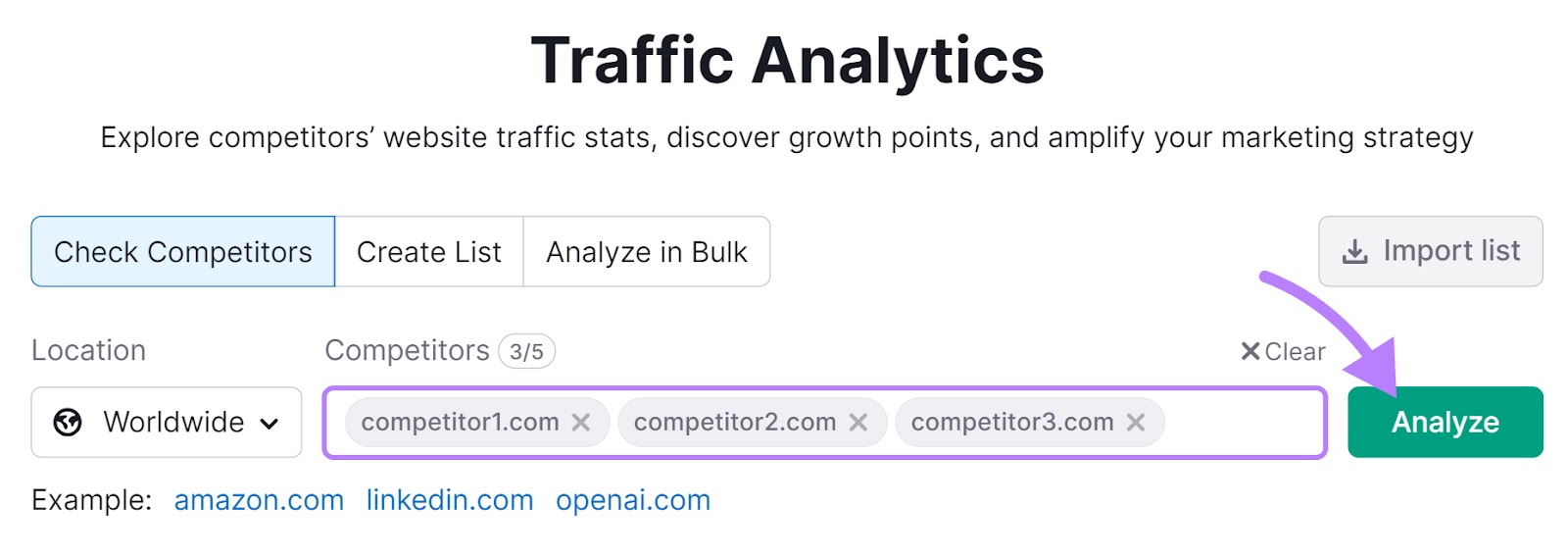
You’ll find key data points for the sites you entered. Like visits, unique visitors, average visit duration, and bounce rate.

Scroll down to check out the channels they are using to drive traffic.
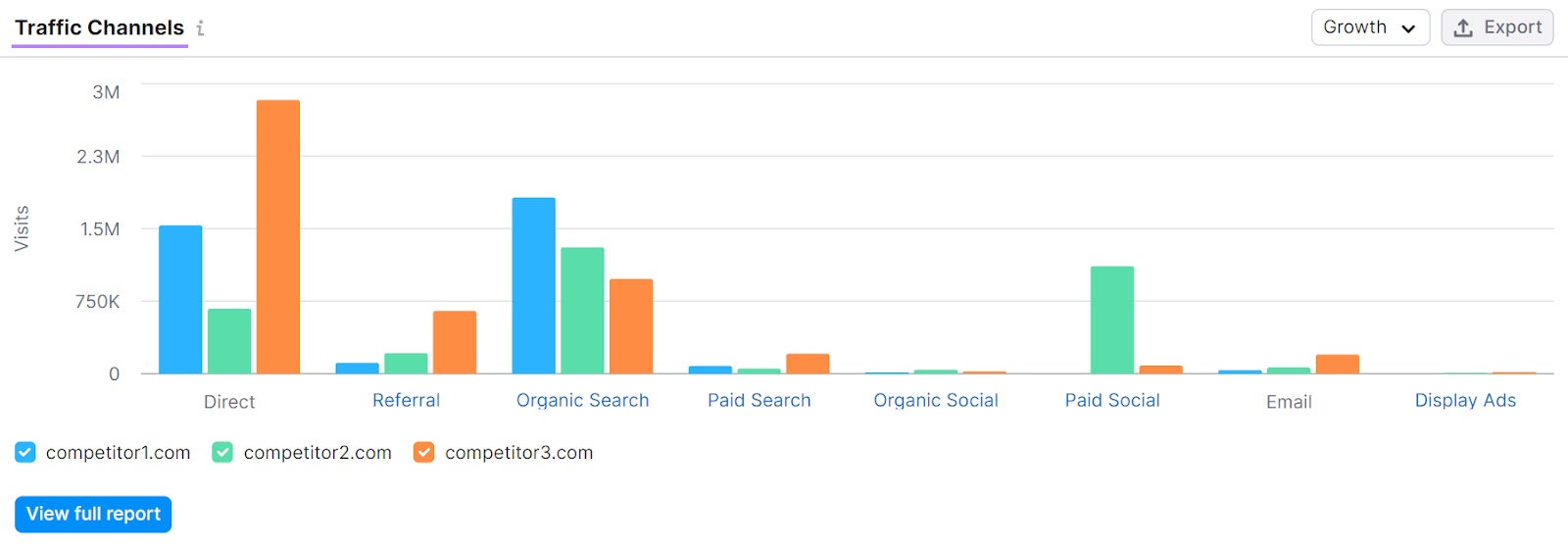
At the bottom of the report, you’ll find company info. Like the number of employees and funding.

This all gives you valuable insight into your competitors’ website performance and traffic sources.
Ecommerce Marketplaces
An ecommerce marketplace is an online platform. Multiple sellers and businesses can list their products or services for sale. This format provides customers with a diverse range of offerings from various sellers within a single marketplace.
Well-known examples include Amazon, eBay, and Etsy. On etsy.com, customers can buy almost any kind of product from millions of different sellers:

Mobile Apps (M-commerce)
M-commerce, short for mobile commerce, involves buying and selling through mobile applications. These apps are designed for smartphone and tablet users, so people can easily browse and buy products on the go.
Many brands and marketplaces offer a mobile app. Poshmark is a “social marketplace for all things style.” Users can snap a photo of their item, list it on the Poshmark marketplace in under 60 seconds, and sell their item right from their phone:

Image Source: Poshmark
Ecommerce Platforms
An ecommerce platform enables businesses to create and manage their online stores. Ecommerce platforms act in the background, powering many ecommerce websites.
One of the most popular ecommerce platforms is Shopify.

Shopify provides businesses with tools like payment processing and inventory management. There are also budget options available.
Another ecommerce company, Shift4Shop, features solutions like their essential shopping cart feature and a streamlined inventory and product catalog builder.
Enterprise Ecommerce Platforms
Enterprise ecommerce platforms are aimed at large businesses and corporations. These platforms offer more advanced features, customization, and scalability than standard ecommerce platforms.
There are many enterprise commerce platforms out there. Some popular ones include Adobe Commerce, Salesforce Commerce Cloud, and Shopify Plus.
Social Media Platforms
Social media platforms play a key role in enabling ecommerce businesses to communicate with customers.
Many ecommerce brands advertise on Instagram and Facebook, showcasing their products and working with influencers. For example, watch brand Daniel Wellington features models and influencers wearing its products.
In this Instagram post, the brand invites users to “shop the look.”

And on Facebook customers can “shop the photo.”

Types of Ecommerce Models
Ecommerce comes in various forms, each catering to different market dynamics and customer relationships. Let’s explore the main types:
Business-to-Consumer (B2C)
In the B2C model, businesses sell products or services directly to individual consumers. This is the most common type of ecommerce.
Example: Fashion brand Abercrombie & Fitch sells products online directly to consumers.

Business-to-Business (B2B)
B2B ecommerce involves businesses selling products or services to other businesses. This model often deals with bulk orders, specialized products, and long-term contracts.
Example: Nespresso sells coffee machines and capsules to offices, hotels, restaurants, and airlines. These types of companies can order online via the Nespresso B2B website.

Business-to-Government (B2G)
B2G ecommerce focuses on businesses selling products or services to government entities, such as federal, state, or local governments. This may include supplying equipment, services, or technology to governmental agencies.
Example: Microsoft, a technology company, provides software and services to various government agencies to improve efficiency and security. Government customers can view different Microsoft 365 plans and sign up for a free trial online.

Consumer-to-Consumer (C2C)
In C2C ecommerce, individuals sell products or services to other individuals. These platforms act as intermediaries, enabling individuals to become sellers, often in a peer-to-peer fashion.
Example: eBay is a prime example of C2C ecommerce, allowing people to auction and purchase items from one another.
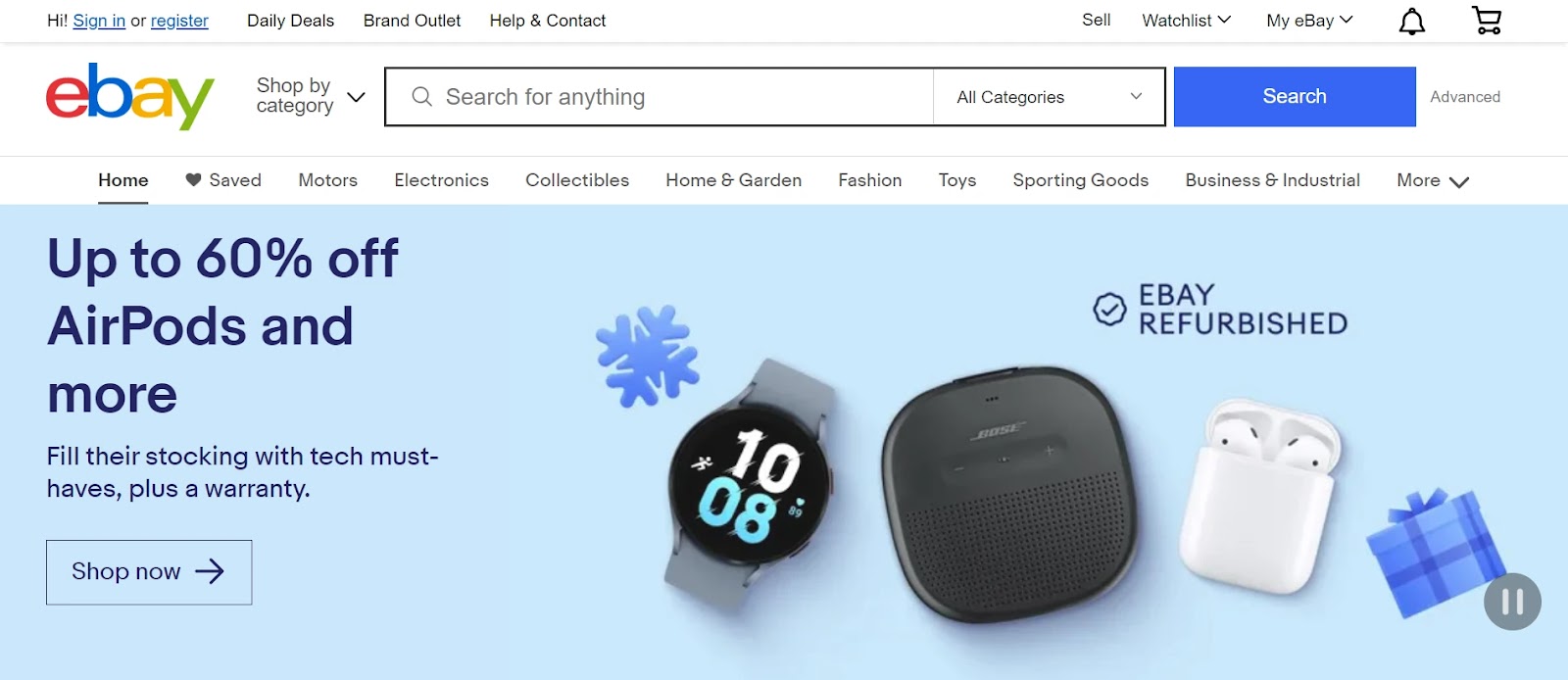
Consumer-to-Government (C2G)
C2G ecommerce involves individual consumers providing products or services to government agencies. This usually involves citizens paying taxes online. But could mean selling goods directly to governmental entities.
Example: The IRS enables U.S. citizens to file their taxes and make payments online.

As you can see, there are many different ecommerce models catering to a wide range of market needs.
Types of Ecommerce Revenue Models
Just like there are many different ecommerce models, there are also various revenue models.
Ecommerce revenue models determine how businesses generate income in the online marketplace. Next, we’ll dive into five key revenue models.
Dropshipping
Dropshipping involves selling products to customers without actually holding inventory. When a customer orders a product, a third-party supplier ships it to them.
Example: DropCommerce, a Shopify app, connects merchants with suppliers. So they can sell products without worrying about inventory and manufacturing.
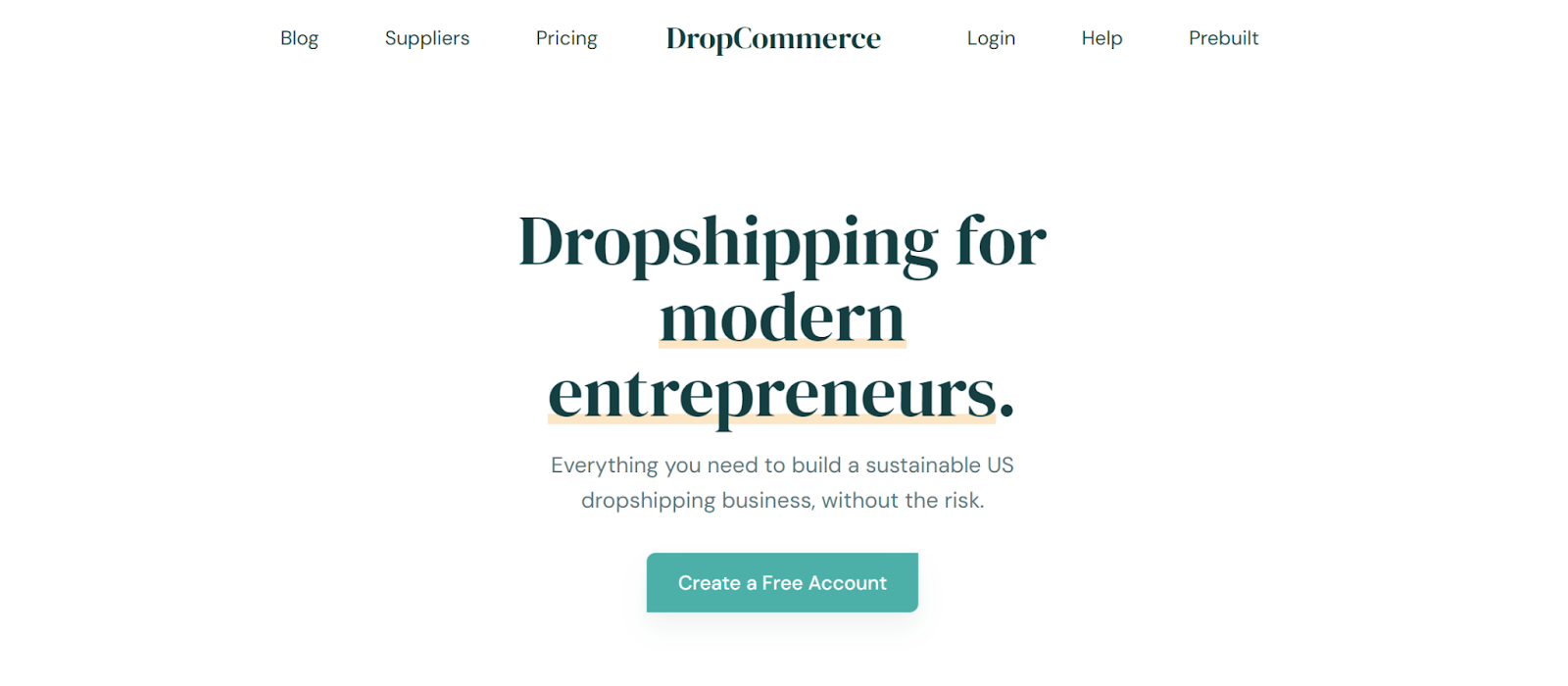
White Labeling
White labeling is a strategy where manufacturers sell the same products to multiple retailers. The retailers then resell the products using their own branding and marketing.
Example: Onoxa, a cosmetics brand, specializes in white labeling for individuals looking to launch their own skincare lines. The Onoxa team creates the products. Resellers can put their own branding on it and use customized packaging.

Private Labeling
In private labeling, products are manufactured exclusively for a retailer’s brand. The retailer and manufacturer work closely together to create a unique product that meets the retailer’s specific requirements.
Example: The Dollar Shave Club is famous for its quirky razor blade ads. By outsourcing the product manufacturing, distribution, and fulfillment, the company was able to focus on marketing and design. The result? Three million subscribers and a $1B acquisition.
Subscriptions
Subscriptions involve customers paying a recurring fee to access a product or service regularly. This model provides a steady stream of income for businesses.
Example: HelloFresh operates on a subscription-based model, where customers subscribe to receive meal kit deliveries on a weekly or monthly basis. Subscribers pay a fixed fee for a curated selection of meal ingredients and recipes delivered to their doorstep, simplifying meal planning and grocery shopping.

Wholesaling
Wholesaling involves selling products in large quantities to other businesses at a reduced price. These businesses, in turn, sell the products to end consumers.
Example: Alibaba is a massive online platform where wholesalers connect with retailers to buy products in bulk for resale.
Each model offers distinct advantages and challenges in generating revenue and building a customer base. So, it’s important to understand how they work.
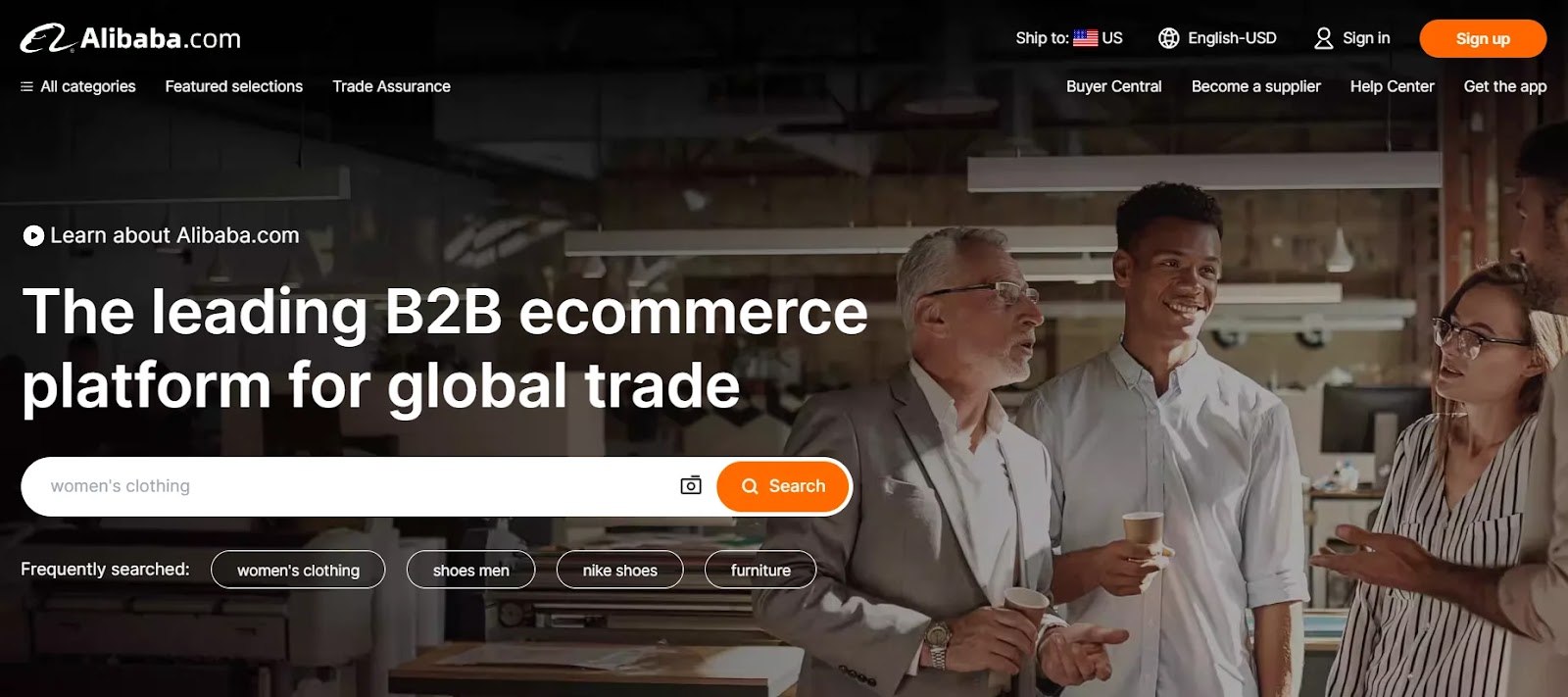
The Benefits of Ecommerce
Ecommerce offers many advantages that have transformed the way businesses operate and customers shop. Let’s explore some of the key benefits of ecommerce:
- Convenience: Ecommerce is super convenient for both businesses and consumers. Shoppers can buy stuff whenever they like, from the comfort of their homes. And businesses can operate 24/7 without the constraints of physical store hours.
- Wider reach: Ecommerce breaks down geographical barriers, enabling businesses to reach a global audience. With an online presence, companies can tap into markets they may not have access to through brick-and-mortar stores. This expanded reach opens doors to new customers and revenue streams.
- Cost-effectiveness: Compared to traditional retail, ecommerce often requires lower overhead costs. Businesses can save on expenses related to physical storefronts, rent, utilities, and in-store staff. Additionally, ecommerce marketing and advertising can be more cost-effective and targeted, optimizing the use of resources.
- Scalability: Ecommerce enables businesses to grow and adapt quickly to changing market conditions. They can launch new product lines, enter new markets, and accommodate increased demand more easily than with physical retail.
- Data-driven insights: Ecommerce generates a ton of data on customer behavior, preferences, and trends. Businesses can leverage this information to understand their target audience, tailor marketing efforts, and optimize product offerings.
The Challenges of Ecommerce
Ecommerce isn’t always easy. The industry presents unique challenges that businesses must navigate to be successful. Here are five common issues:
- Cybersecurity threats: Ecommerce businesses handle sensitive customer information, including payment details. This makes them prime targets for cyberattacks, such as data breaches and fraud. So, they need robust cybersecurity to protect the business and its customers.
- Logistics and fulfillment: Efficient order fulfillment and delivery are critical for customer satisfaction. Managing inventory, selecting reliable shipping partners, and ensuring timely deliveries can be complex. Particularly for businesses dealing with high volumes of orders.
- Customer experience: The online shopping experience needs to be seamless to build customer trust and loyalty. An ecommerce business needs to make it easy and enjoyable for customers to shop with them. Like fast page speed and good customer service.
- Regulatory compliance: Ecommerce businesses must comply with a myriad of regulations, including data protection, consumer rights, and tax laws, which can vary significantly by region and country. Navigating this regulatory landscape can be challenging, especially for businesses operating globally.
- Intense competition: The digital marketplace is highly competitive, with numerous businesses vying for the attention of online consumers. Standing out in a crowded industry requires effective branding, marketing, and differentiation strategies.
To figure out who is competing against you and how to outsmart them, you can use Semrush’s Domain Overview tool.
Enter the name of your site, or one of your competitors, and click “Search.”

Scroll down to see a list of your main organic competitors. Semrush shows you your main competitors and their organic search traffic in a handy map:
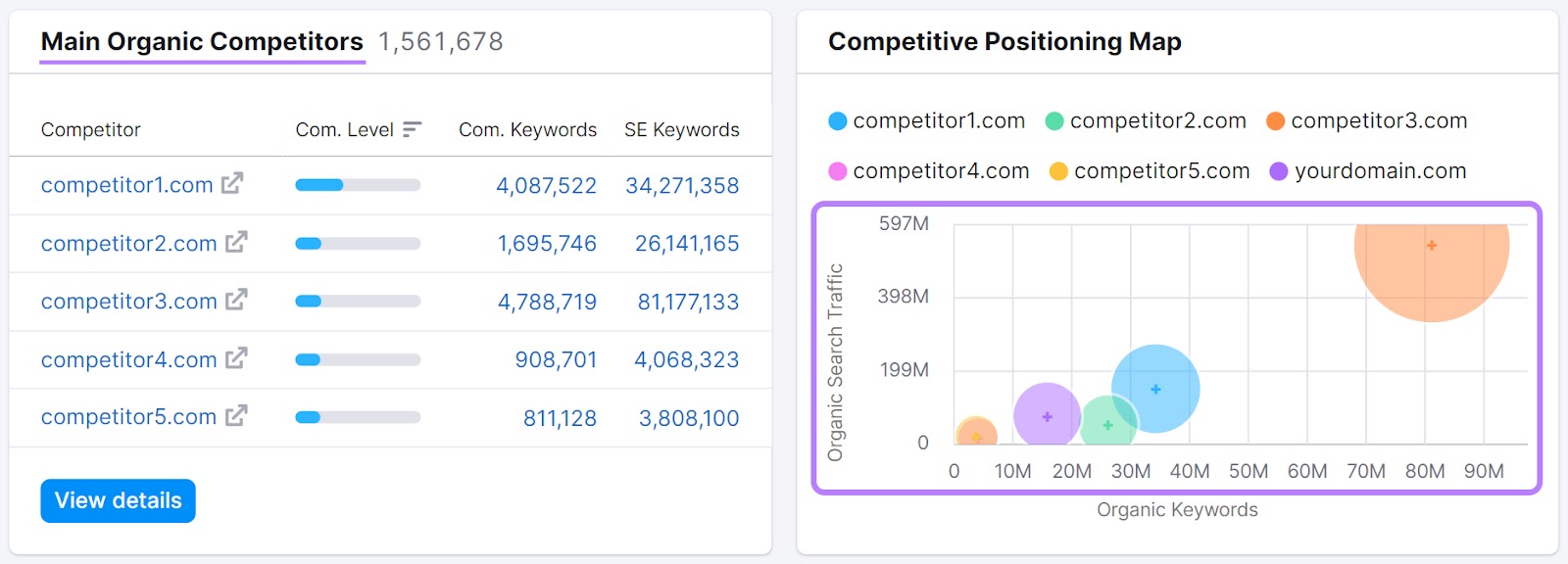
You can also gain insight into competitors’ paid ads strategy. Semrush shows you what their ads look like:
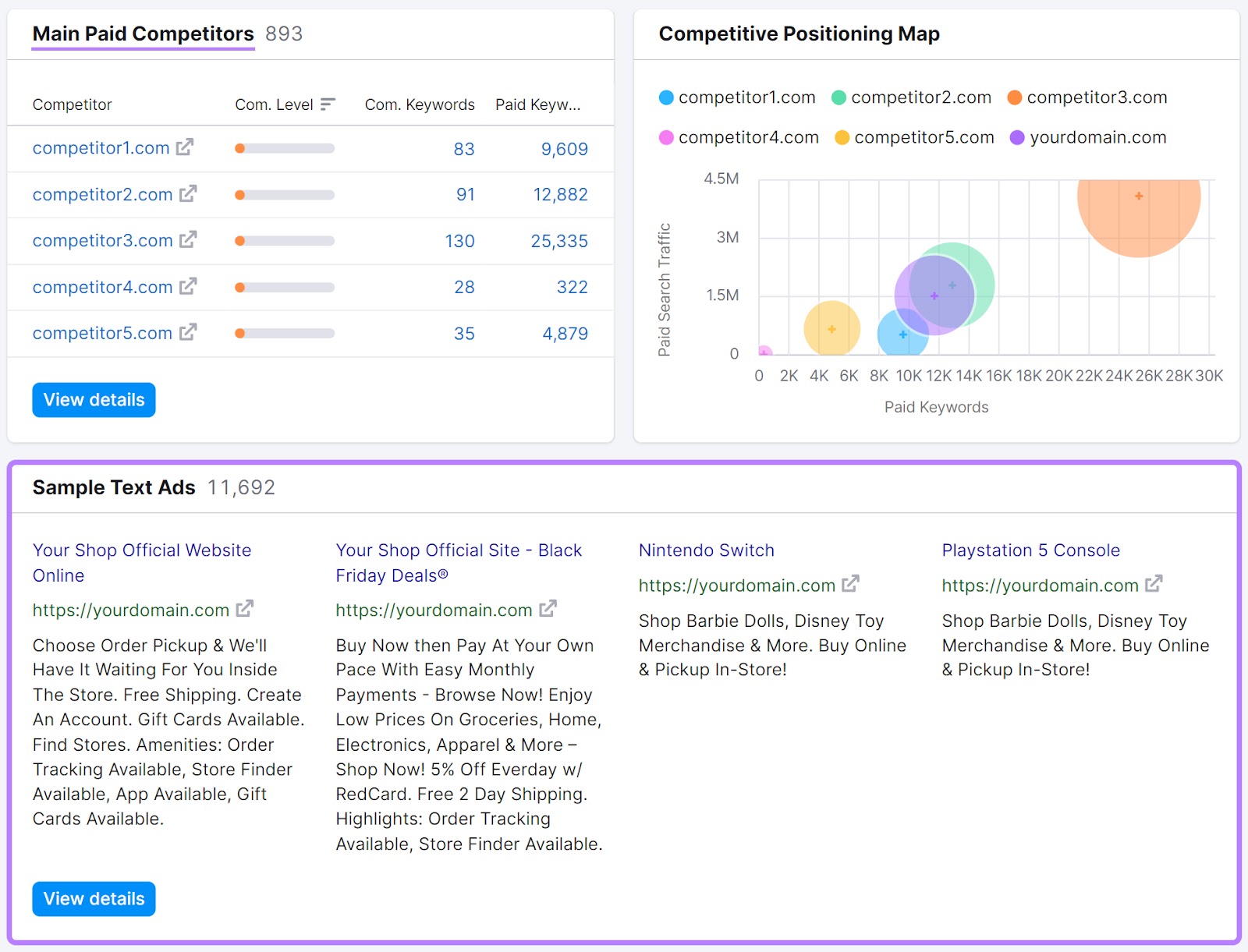
How to Start an Ecommerce Business
Starting an ecommerce business can be an exciting journey. But it requires careful planning and execution. Here’s a step-by-step guide to get you started.
Conduct Market Research
The first step is to research your chosen niche, market trends, and competitors.
You need to understand your industry. So you can figure out what customers need. And how you can fill that need better than the competition.
To gain a better understanding of the business landscape, you can use Semrush’s Market Explorer.
Let’s say you’re interested in setting up an ecommerce cosmetics brand. Open the tool and click “Analyze Category.” Then, select your location and business category and hit “Research a market.”
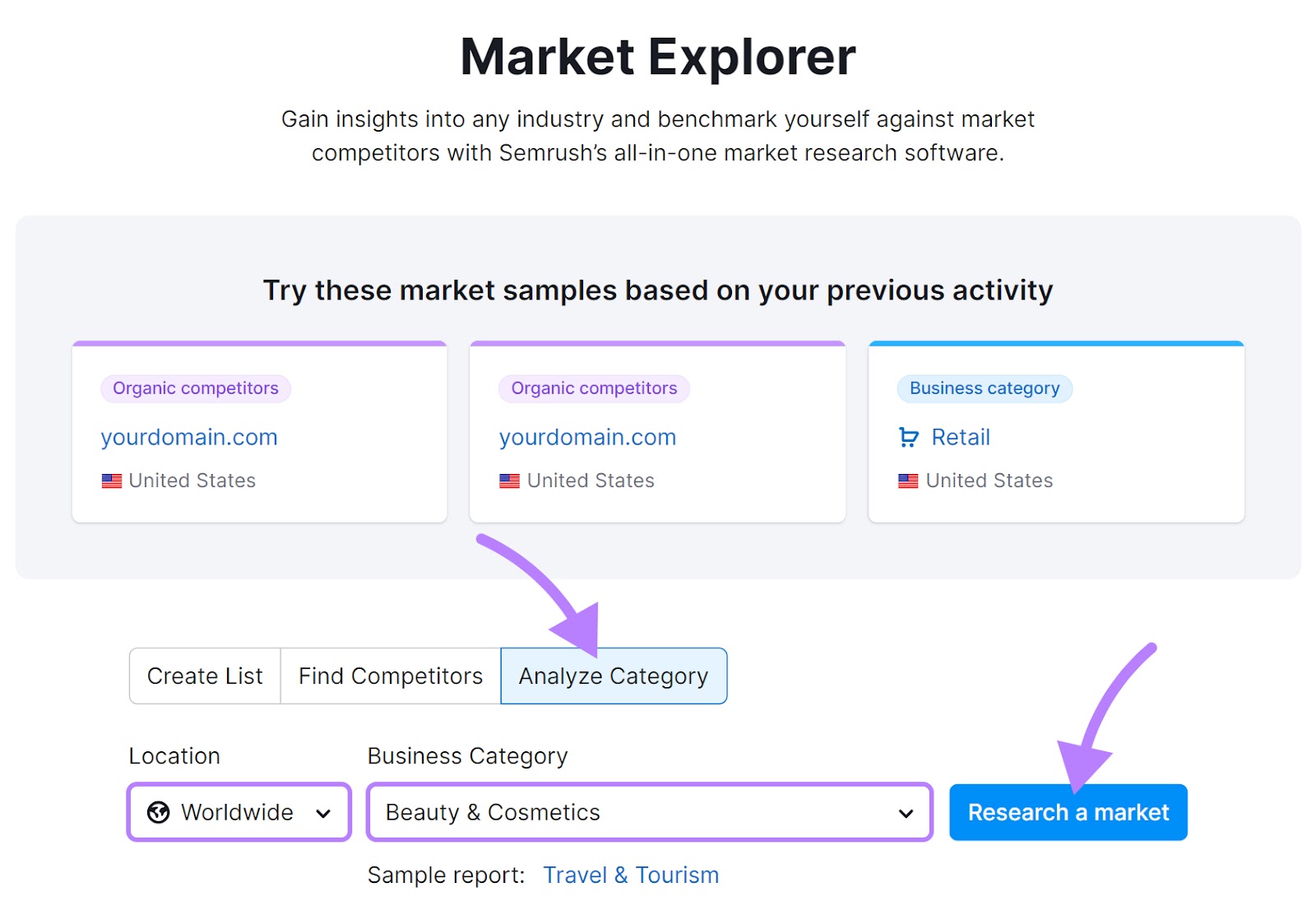
You’ll see key information about your chosen industry. Like key players and their position in the market, as well as the overall market size.
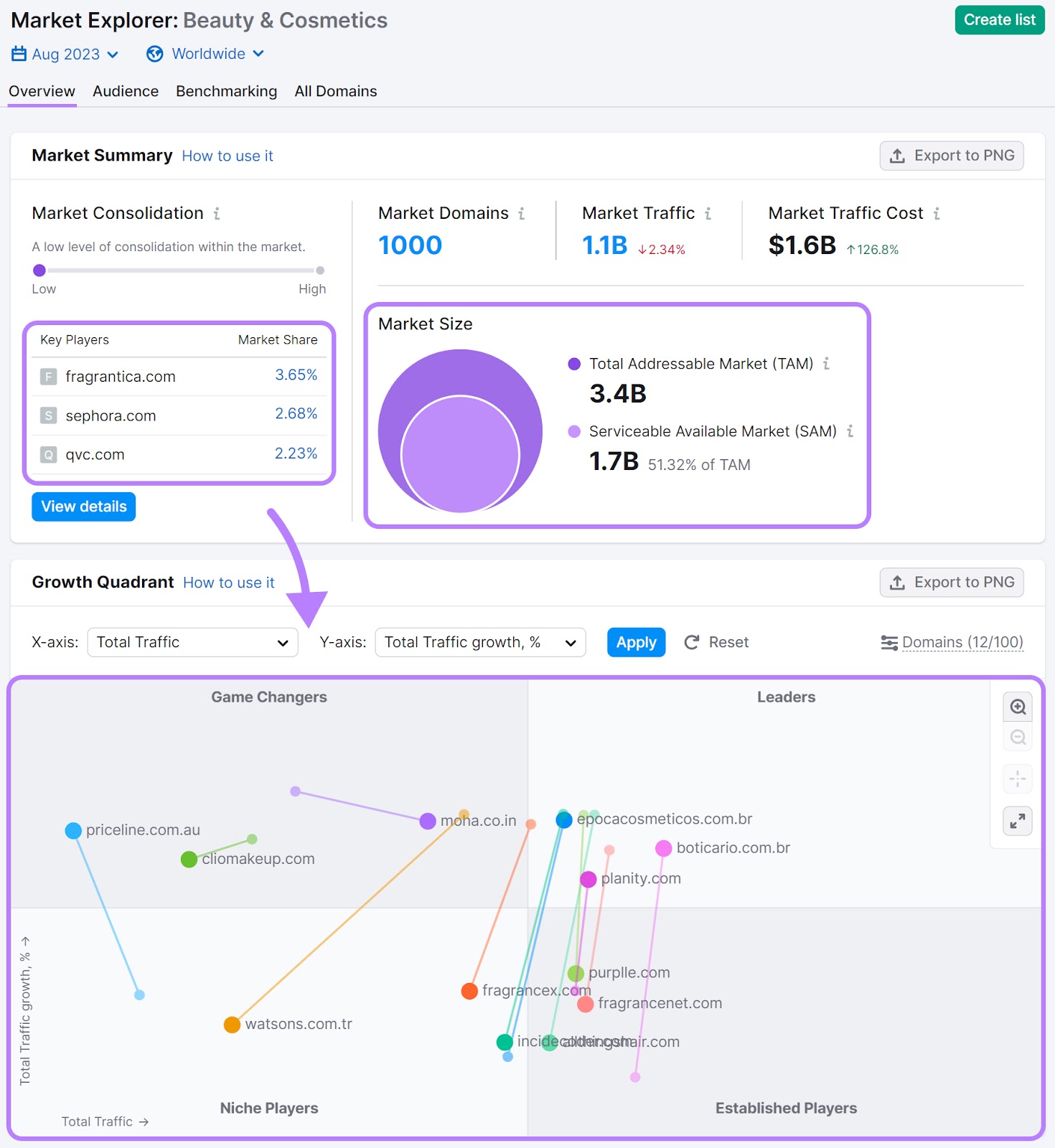
To learn more about your target audience, click the “Audience” tab. You’ll find demographic data such as age, sex, and socioeconomic status. This information can help you with decisions like branding, targeting, and pricing.
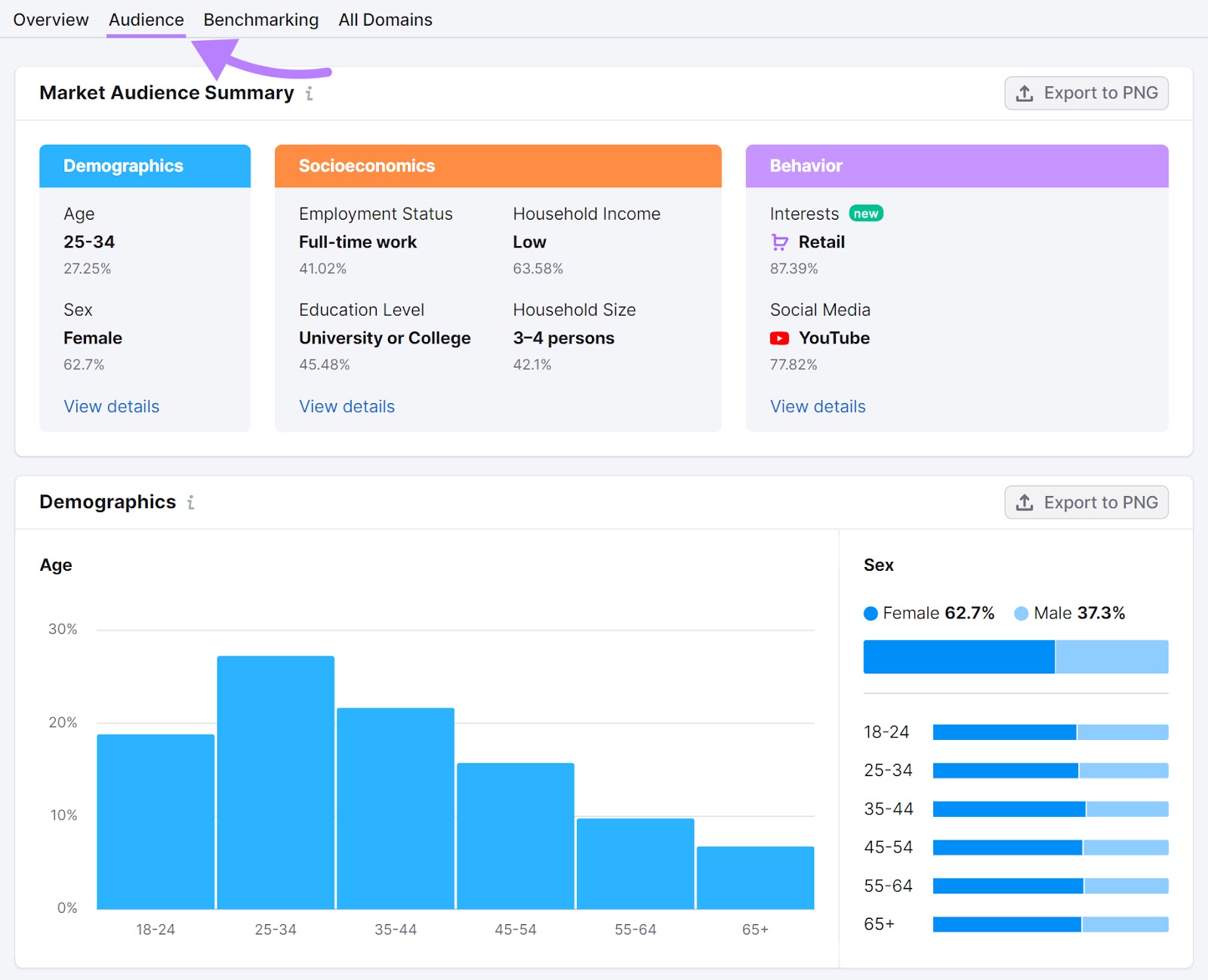
If you scroll down further, you’ll see your audience’s top interests and preferred social media platforms.
These insights can guide your ecommerce marketing strategy. Because you’ll know whether your potential customers are hanging out on YouTube, Instagram, or TikTok. Or a combination of these.
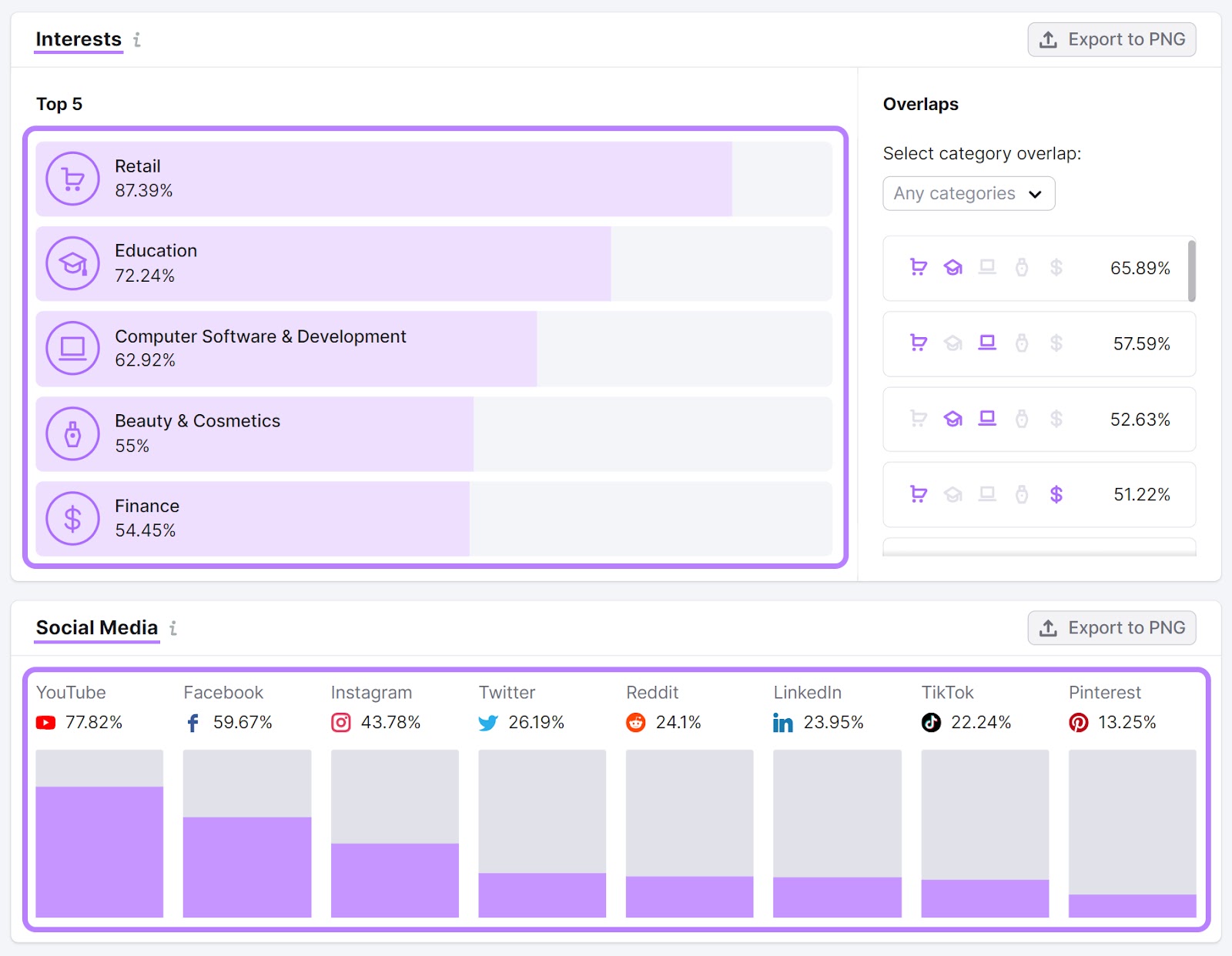
Create a Business Plan
Craft a detailed business plan outlining your goals, target audience, revenue model, and marketing strategy. Calculate startup expenses, operational costs, and revenue projections. A well-thought-out plan is your roadmap to success.
Handle the Legal and Financial Setup
Choose a suitable business structure and register your business. Ensure compliance with permits and licenses. Set up a dedicated business bank account and establish financial management procedures. You might need a lawyer or business advisor to help you with all of this.
Develop Your Product Strategy
You will have to source or create the products or services you intend to sell. This will probably involve working with suppliers. Once you have a good understanding of costs and logistics, you can consider pricing and inventory management.
Develop Your Website and Choose an Ecommerce Platform
You will need to build an ecommerce site or ask an agency or developer to create one for you. You’ll most likely need an ecommerce platform, like Shopify or WooCommerce, to handle transactions and inventory. Make sure your website is fast and secure. And that it offers a good user experience.
Website Content and SEO
Ecommerce SEO and content strategy are essential. You’ll want to optimize your website for search engines (SEO) to enhance visibility and attract organic traffic.
SEO for ecommerce involves the creation of product pages with detailed descriptions. You can also leverage link building to boost rankings and traffic even further.
Further reading: Beginner’s Guide to Ecommerce SEO
Digital Marketing Strategy
How will customers find you? And how will you convince them that your product or service is the right one for them? That’s marketing.
Your marketing strategy will depend on your target audience, business needs, and budget. A digital marketing strategy for ecommerce often includes a mix of channels, such as SEO, social media, email campaigns, video, and display ads.
Customer Service and Support
You’ll need to hire a customer service team or do it yourself. Customer service is essential when it comes to building trust and loyalty. If a customer has an issue or question, someone should be on hand to help them fast.
Shipping and Fulfillment
Select reliable shipping partners and set shipping rates. Ensure the process is as smooth as possible, so customers get their items on time.
Launch and Monitor
Thoroughly test your website before launching to make sure everything is secure and working properly.
Once your ecommerce website is live, closely monitor its performance. You can use tools like Google Analytics and Semrush. Data insights, like traffic and engagement, can help you fine-tune your strategy.
Scale and Expand
Once you’re up and running, you’ll need to focus on growing your ecommerce business.
Growth could mean diversifying your offerings or entering new markets. Be sure to encourage customer reviews and feedback so you can keep improving your products and services.
Tips for Ecommerce Success
Ecommerce isn’t easy. It’s competitive, and there are a lot of moving parts to consider. Here are some essential strategies and best practices to help your ecommerce business thrive:
- Customer-centric approach: Put the customer at the center of everything you do. This means designing your website in a user-friendly way, providing clear product information, and offering helpful customer support.
- High-quality product imagery: Customers want to see what they’re buying. Invest in professional, high-resolution images that showcase your products from various angles. And don’t forget to optimize your images for SEO.
- User reviews and ratings: Encourage customers to leave reviews and ratings for products they’ve purchased. Reviews build social proof by showcasing real customer experiences and providing insights for other shoppers and for you as a business.
- Effective SEO: SEO involves optimizing your website’s content, structure, meta data, and off-page signals to help it rank higher in search engines like Google. If you keep improving your SEO strategy, you can increase your website’s visibility and drive organic (unpaid) traffic from search engines.
- Competitive analysis: Regularly analyze your competitors’ strategies, including pricing strategies, product offerings, and customer acquisition tactics. This information can help you identify opportunities and threats and adapt your own strategies accordingly.
Set Your Ecommerce Business Up for Success
You should now have a basic understanding of how to set up an ecommerce business.
But ecommerce is a very competitive space. If you want to be successful and grow, the right ecommerce tools can make all the difference. With Semrush’s Market Explorer, you can identify competitors, explore their strategies, and more. Sign up for free today to get started.
